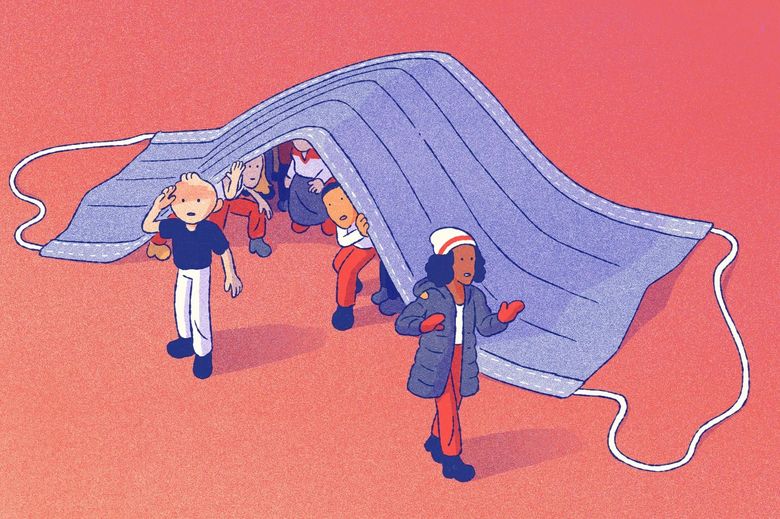The signs at scattered rallies across California on Monday were familiar to anyone who has followed the state’s yearslong childhood vaccine wars.
“Our kids are not lab rats.” “My body, my choice.” “Coercion is not consent.”
California has mandated that all schoolchildren must eventually get COVID-19 vaccines, the first and only state to do so. In protest, some parents pulled their children from school Monday and took to the streets in Bakersfield, Los Angeles, Vacaville, Sacramento and more.
At the heart of this fight is a complicated truth: California’s new student vaccination requirements haven’t yet begun, but the state already has a remarkably low number of outbreaks at schools.
Of the 2,321 nationwide school closures since August because of COVID-19, about 1% have been in California — even though the state accounts for 12% of the nation’s K-12 students, according to data from Burbio, a technology company that monitors outbreaks.
So some parents may be wondering: If masking, testing and other prevention strategies are working so well, why is the state adding an immunization requirement?
Simply stated, vaccines are the best tool for sparing people from coronavirus infections. You’re probably familiar with these numbers by now, but the Moderna and Pfizer-BioNTech vaccines prevented roughly 95% of symptomatic illnesses in clinical trials.
And while experts say California’s classroom safety measures are highly effective, the fall semester has also coincided with a precipitous drop in coronavirus spread statewide. In other words, more protection may be needed if cases begin to climb again.
Linda Darling-Hammond, the president of California’s Board of Education, told me she saw vaccines as the next stage of the state’s pandemic response. Gov. Gavin Newsom has often been criticized for introducing restrictions, such as in July when he mandated universal masking in schools — only for the move to be later endorsed by federal officials.
“The science works, if you are very, very persistent and purposeful about implementing it,” Darling-Hammond told me. “I think there’s a human tendency to say — as soon as things look good — ‘OK, we can take our foot off the gas.’ We can’t.”
Darling-Hammond said the state needed to be prepared for the emergence of more variants. Vaccinating children will not only confer them protection from infection but also limit virus spread that can lead to new mutations.
Statewide, 71% of Californians 12 and older are fully immunized, one of the highest rates in the nation, according to a tracker by The New York Times. The percentage is lower for the youngest age group eligible for vaccines, those between 12 and 17, at around 57%.
But there’s a lot of variation across the state, and school outbreaks have typically hit places where coverage is low, Darling-Hammond told me.
Counties where multiple schools have closed this fall include Kern (where 43% of people 12 and older are fully vaccinated), Tehama (41%) and Lassen (32%).
There aren’t uniform guidelines across the state for when a school must shut down in response to an outbreak, so the closure numbers aren’t a perfect measure of how many students and teachers are falling sick. Still, they provide a snapshot of where and how often big outbreaks are overwhelming districts.
Statewide, the student vaccine requirement isn’t expected to take effect until July — first for seventh grade and up, followed by kindergarten through sixth grade — and only after the vaccines get full approval from the Food and Drug Administration for those age groups. (Currently, only the Pfizer-BioNTech vaccine has received full FDA approval — and that’s only for people 16 and older.)
For other childhood vaccines, California barred parents in 2016 from citing their religious views to get out of vaccinating their children, after the number of unvaccinated students crept dangerously high.
But for the COVID-19 vaccine, officials say, parents will be allowed to opt out if they feel it conflicts with their personal beliefs.
